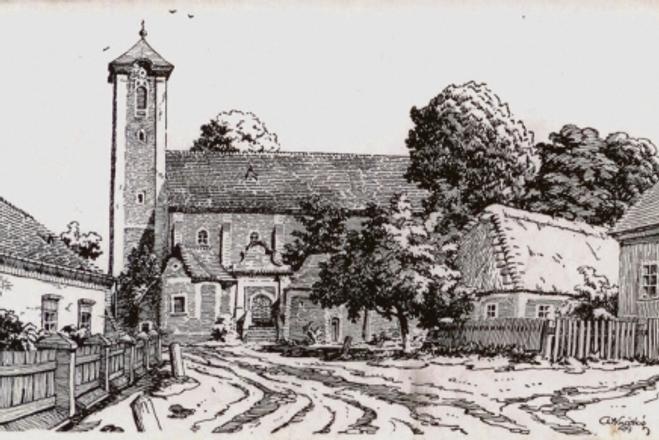THIS postcard of the small town of Brezová pod Bradlom, dating back to 1919, is a print of a drawing by Czech painter Aleš Krátký, who worked in Slovakia at that time. In addition to several other postcards of Brezová, his postcards of Trnava and Modra are also well known.
In this illustration we can see several interesting details: the house on the right was probably inhabited by people of limited means, as it is wooden and has a thatched roof. The house across the street, however, has a shingled roof and is surrounded by a better-quality fence, likely indicating that its owner was more affluent. Both sides of the street are lined by wooden posts which demark the road. The most remarkable building in this drawing is the Holy Trinity Church, surrounded by a wall that is partially visible in the illustration. The town’s first public clock was probably installed on the church tower in 1748. Although it no longer exists, its dials remain on the tower.
By the end of the 18th century, Brezová pod Bradlom had more than 5,000 inhabitants, which made it quite a densely populated town by Slovak standards, more than even Banská Bystrica, Nitra or Trenčín at that time. Brezová’s locals were known for trading raw and tanned skins. They often made long trips to sell their goods in cities like Bratislava (then Pressburg), Brno, Budapest and Szeged. Thus, the ever-travelling inhabitants joked that Judgment Day will come only when all Brezovans are at home.


